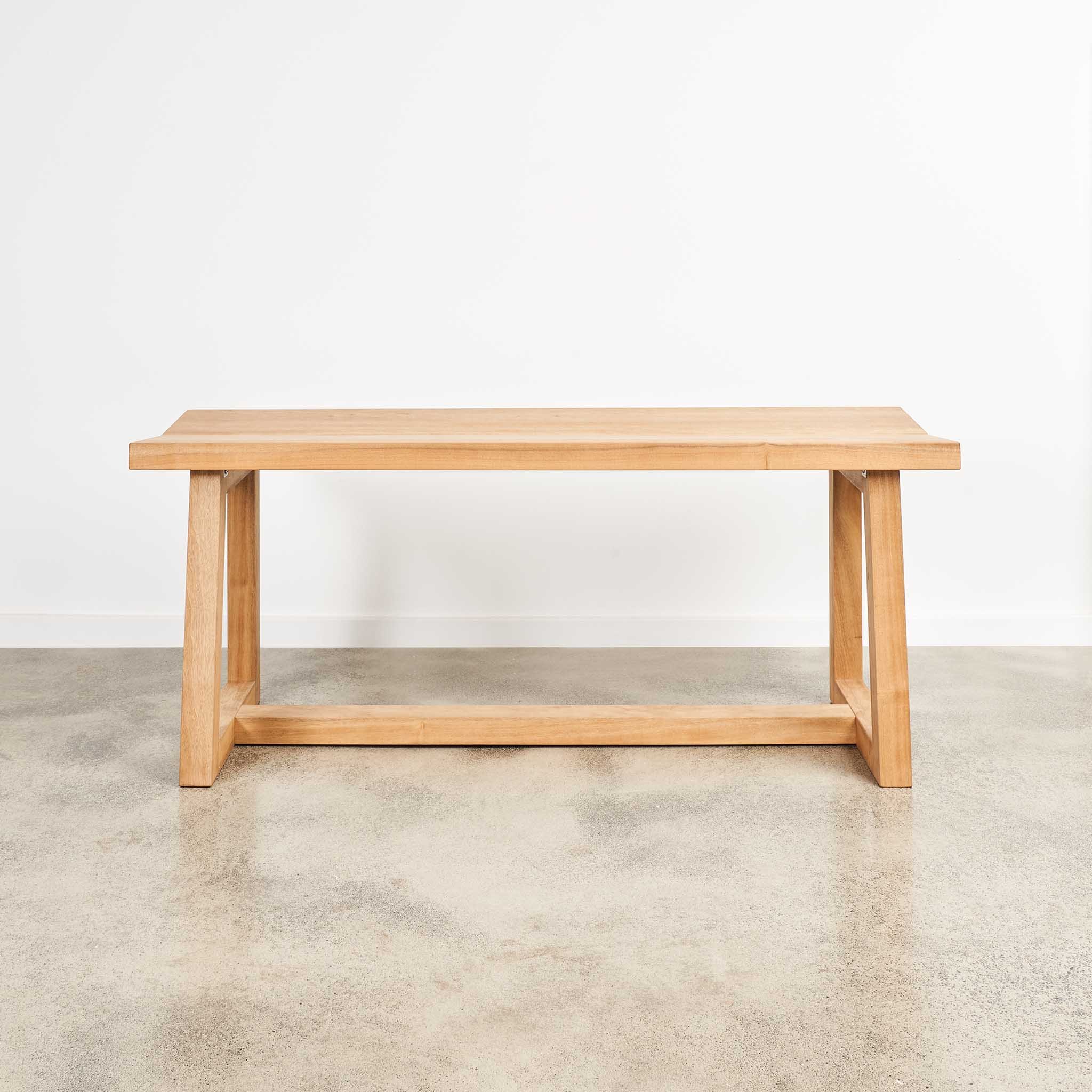Bruce Hart
Bruce’s practice extends beyond creating visually stunning pieces; it encompasses sustainability across the entire lifecycle of his materials. From personally felling trees to milling and seasoning lumber, every step is executed with care before he envisions his designs. This dedication adds an incredible depth and dimension to his work.
Renowned for his exquisite dining room tables, Bruce's creations serve both functional and aesthetic purposes, becoming focal points that elevate spaces with grace. His ability to balance form, function, and artistic expression shines through in each uniquely designed piece.
Through sustainable practices and unwavering dedication to quality, Bruce crafts heirloom pieces that captivate the senses and enrich the lives of their owners.
Background
Growing up in Marin County, California, Bruce's woodworking journey began at Proctor Academy, a high school focused on experiential learning. Here, he not only learned woodworking but also gained knowledge in woodland forestry management and lumber milling. While attending university, Bruce explored wood sculpture classes, sparking his interest in furniture making.
In 2011, Bruce moved to Grass Valley near Nevada City. During summers, he fought forest fires, and winters were dedicated to experimenting in his woodshop. Realizing the challenges of furniture making, he sought to accelerate his skills by working for a local cabinet maker, which proved successful.
Recognizing Bruce's potential, the cabinet maker, an alumnus of the Krenov School of Fine Furniture, encouraged him to apply. Accepted in 2016, Bruce began his journey into fine furniture.
Today, Bruce resides in Grass Valley, where his workshop is nestled in the woods overlooking Scott's Flat Lake. Alongside crafting furniture, he takes on commission work. When not immersed in his creations, he can be found milling lumber in the hills for future projects.
“Madrone is probably my favorite wood. I have developed a consistent method of drying it that yields a high percentage of usable material.”
What is your process? I have a highly inefficient design process. I usually scour the internet and find a ton of horrible and ugly pieces of furniture, which only confirms that I need to make something original. I then sketch some awful drawings of what I want to do and call Kendra Woolfe in distress. She tells me that my ideas are OK enough, and to keep going. Once I’ve calmed down, I make some scaled drawings and figure out the joinery. Then the making begins.
Tell us about your woodshop. My current workspace is an 1800 sq/ft converted auto shop in the woods. I have most of the things I need and some others that I don’t.
When did you realize ‘this is it—I’m a woodworker now’? I was back in the shop a day after I cut off one of my fingers, so I guess that’s when I realized I really liked woodworking.
What is your favorite wood? Madrone is probably my favorite wood. I have developed a consistent method of drying it that yields a high percentage of usable material. California bay laurel and claro walnut are pretty nice too.
Any hobbies or side gigs? For some reason I have begun souping up old mopeds I’ve found, so they go really fast.
Any woodshop pets? We have a cat named Zabaglione—she doesn’t understand woodworking like I do.






